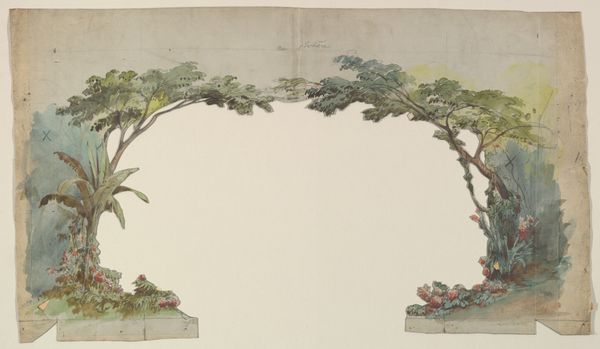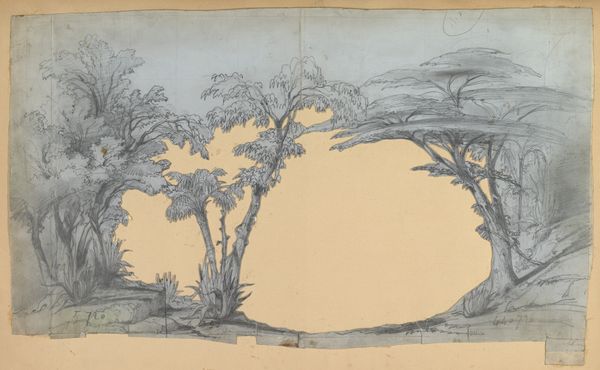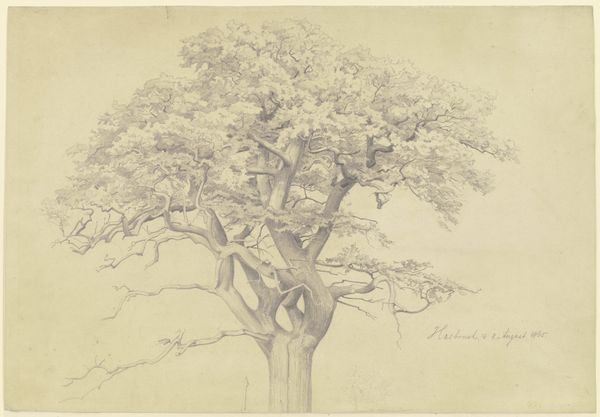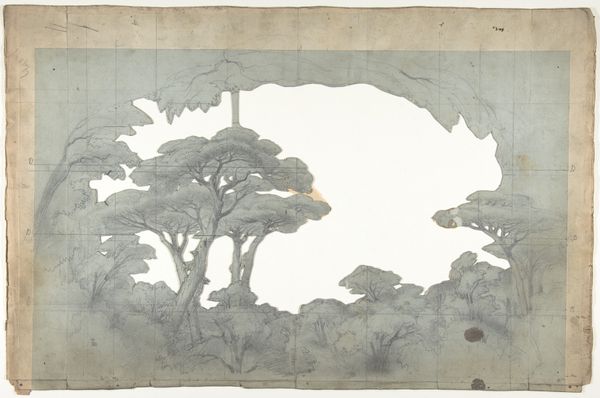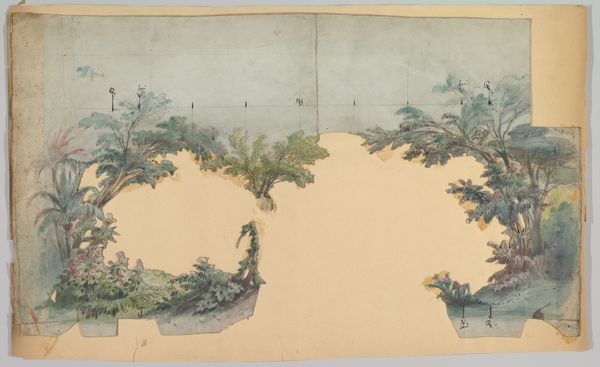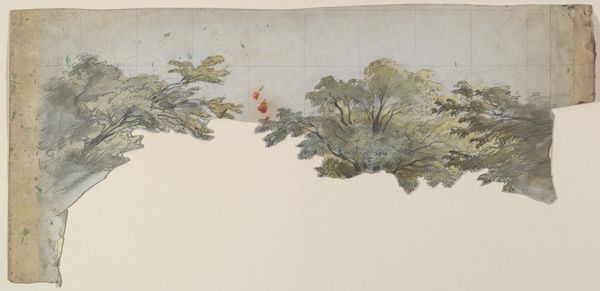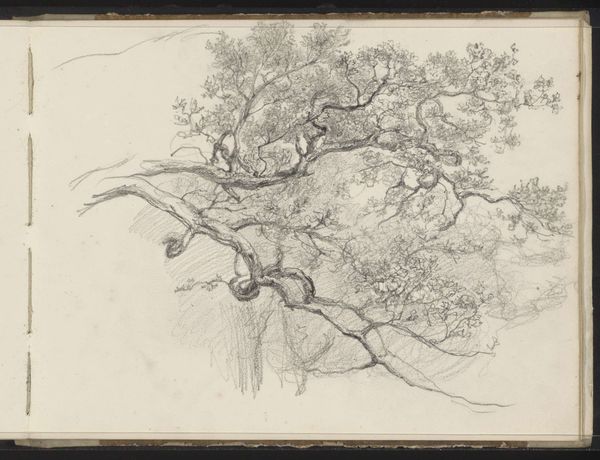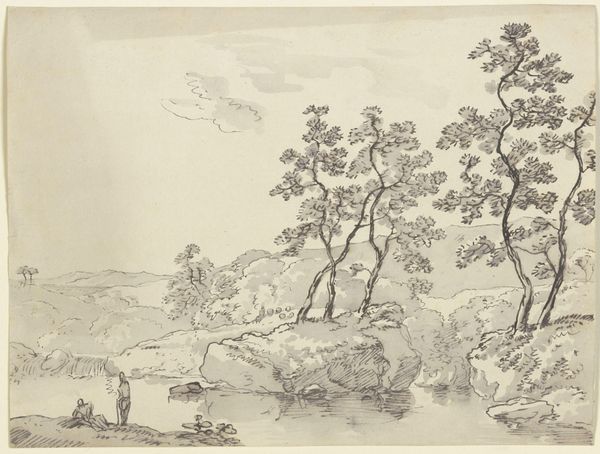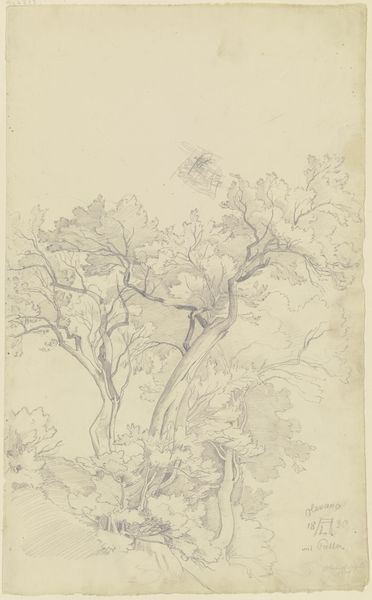
Design for a Stage Set at the Opéra, Paris 1828 - 1890
0:00
0:00
Dimensions: Irregular sheet: 12 1/2 x 21 5/16 in. (31.7 x 54.1 cm)
Copyright: Public Domain
Curator: Let’s turn our attention to Eugène Cicéri’s "Design for a Stage Set at the Opéra, Paris," likely created between 1828 and 1890. The artwork uses watercolor and drawing techniques to conjure up what I imagine to be a highly romantic landscape. Editor: It gives me a rather unfinished feeling, almost like the watercolorist has only laid down a foundation. What story are these theatrical set pieces trying to support, and what labor went into realizing Cicéri's vision for Opéra audiences? Curator: Stage design, especially in the 19th century, was inherently intertwined with cultural projection and, indeed, imperial desires. The Parisian Opéra, more specifically, catered to an elite that actively participated in the creation and upholding of social hierarchies. Here, this lush rendering seems to exoticize a far-away locale for entertainment purposes. Editor: And those social hierarchies extended into the theater itself. Everything down to the very paints—the pigments and the processes involved in their procurement and manufacture—would reinforce the wealth of the patron, and the relative powerlessness of the theater worker. Can you say more about Romanticism's role here? Curator: Certainly. Romanticism in this context, while seemingly focused on aesthetic beauty and an escape into nature, served as a tool to legitimize colonialism, softening its edges through carefully constructed imagery. The trees depicted, the rendering of foliage… it presents nature as something docile, ready to be consumed, reflecting colonial attitudes toward the lands being represented on stage. Editor: I wonder how many workers would be needed to translate this design into a workable stage piece? These "illustrations" or "renderings" also function as an aesthetic product to be consumed by other designers or theatre workers, almost a parallel marketplace. It all brings up interesting questions about art, labor, and design of spectacle. Curator: Precisely! This reminds us that even what appears to be pure artistic expression is enmeshed within sociopolitical networks of meaning. It makes us more critically aware of our role as consumers of cultural imagery. Editor: I will look at theatre backdrops in new ways. Curator: As will I!
Comments
No comments
Be the first to comment and join the conversation on the ultimate creative platform.

